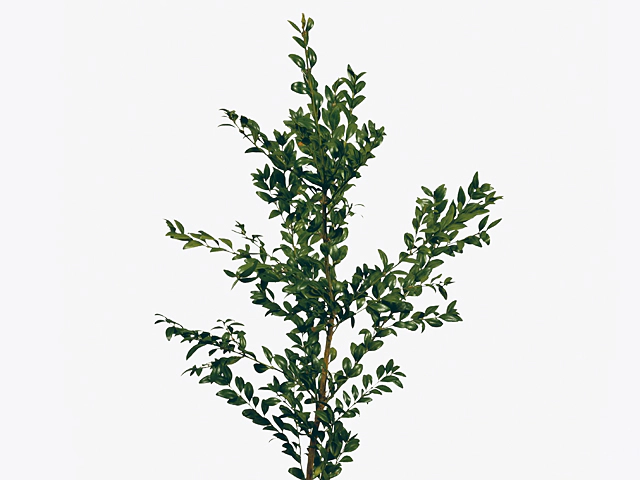Buxus sempervirens

| Winter hardness | Good (USDA-zone 5, 6) |
| soil pH requirement | Neutral (pH 6,5 - 7,5) |
| Light conditions | Semi-shades |
| Toxicity (if consumed) | Highly toxic |
| Moisture requirements | Well-drained |
Boxwood, scientifically known as Buxus sempervirens, is a popular evergreen shrub that is widely cultivated in gardens and landscapes. It is commonly referred to as box or boxwood and is cherished for its versatile nature and ornamental appeal.
One of the key features of boxwood is its ability to withstand harsh winter conditions. This shrub has good winter hardness, making it suitable for cultivation in USDA-zone 5 and 6 regions. Whether it's facing chilling winds, frosty temperatures, or even snow, boxwood proves its resilience and continues to thrive.
When it comes to soil preferences, boxwood prefers a neutral pH level ranging from 6.5 to 7.5. This makes it adaptable to a wide range of soil types. However, it is essential to ensure good drainage to prevent waterlogging, as boxwood does not tolerate waterlogged soil well. Therefore, well-drained soil is crucial for the healthy growth of boxwood.
In terms of light requirements, boxwood flourishes in semi-shaded areas. While it can tolerate full sun, it tends to exhibit better growth and denser foliage in areas with partial shade. This makes it a suitable choice for various garden settings, including borders, hedges, and even container gardening.
It is important to note that boxwood possesses a high level of toxicity if consumed. All parts of the plant, including leaves and stems, are highly toxic to humans and animals. Therefore, it is advised to keep boxwood away from areas accessible to children and pets to prevent accidental ingestion.
When it comes to moisture requirements, boxwood thrives in well-drained soil. Adequate moisture is necessary for its growth, but excessive water accumulation should be avoided. To maintain optimal moisture levels, regular watering is necessary, especially during dry spells or periods of drought. However, it is crucial not to overwater, as this can lead to root rot and other fungal diseases.
Boxwood is valued not only for its horticultural attributes but also for its aesthetic appeal. With its dense, glossy foliage and ability to be pruned into various shapes, boxwood is often used in formal gardens, giving them a classic and timeless appearance. It provides year-round color and structure to the garden, making it a favorite among gardeners and landscapers alike.
In conclusion, boxwood, or Buxus sempervirens, is a versatile evergreen shrub that offers many benefits to garden enthusiasts. Its ability to endure harsh winter conditions, adaptability to various soil types, preference for semi-shaded areas, and aesthetic appeal make it a popular choice for many landscaping projects. However, caution should be exercised due to its high toxicity if consumed. By providing well-drained soil, regular watering, and strategic placement, boxwood can thrive and enhance the beauty of any garden or landscape.
Market availability index by month:
| Jan. | Feb. | Mar. | Apr. | May | Jun. | Jul. | Aug. | Sep. | Oct. | Nov. | Dec. |
|---|---|---|---|---|---|---|---|---|---|---|---|
| 3 | 3 | 3 | 3 | 4 | 3 | 3 | 3 | 3 | 4 | 4 | 4 |